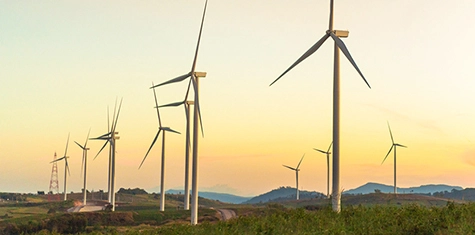The Treasury Department and IRS have released Notice 2025-42, overhauling the rules for determining the Beginning of Construction (BOC) of a project for purposes of the §45Y production tax credit and §48E investment tax credit as it applies to wind and solar facilities. These changes, driven by the One Big Beautiful Bill Act (OBBBA) and Executive Order 14315, materially tighten the path to qualifying and preserving credits for wind and solar facilities. Key takeaways are:
- The Five Percent Safe Harbor is eliminated for most wind and solar projects (except as noted below). The 5% Safe Harbor should remain available for purposes of determining whether the material assistance rules under Sections 70512(b) and 70513(b) of the OBBBA apply, but projects must still separately meet the Physical Work Test by the July 4, 2026, deadline.
- The Physical Work Test is now the exclusive method of establishing that construction began before July 5, 2026, which is the date set in the OBBBA for projects to vest under the prior rules of PTC and ITC eligibility. Off-site physical work of a substantial nature was specifically noted to include some activities which previously may have been more commonly categorized under the 5% Safe Harbor rule, such as inclusion of manufacturing off site of specific components, mounting equipment, support structure, inverters or transformers. These items are only eligible if unique to the project and are not in existing inventory or normally held in inventory by one selling the component / part to the developer.
- A limited 5% cost-incurred Safe Harbor option for BOC survives solely for solar projects with a maximum net output of 1.5 megawatts (MW) (AC). All other facilities must satisfy the Physical Work Test.
- Continuity Safe Harbor remains substantially unchanged.
- The notice sets September 2, 2025, as the effective date for the changes to the Five Percent Safe Harbor, so that option remains available only for the next few weeks.
Practical Implications
Get to Signature
Contracts relating to the 5% Safe Harbor test must be finalized and begin performance by September 1, 2025.
Adjust BOC Plans for activities consistent with the Physical Work Test to begin before July 5, 2026
Cost-incurring strategies alone (e.g., non-bespoke turbine or panel orders) will no longer preserve credit eligibility for most projects. Developers must accelerate on-site or contractually bound off-site physical work of a “significant nature” (e.g., foundation excavation, rack installation, custom component manufacturing).
Supply-Chain & Contract Review
Binding, enforceable contracts must precede off-site work. Inventory components and “off-the-shelf” items do not count toward the Physical Work Test but bespoke manufacturing (e.g. custom transformers or wind turbine blades) does and should be specified as such in the contract.
Low-Output Solar Opportunity
Developers of up to 1.5 MW (AC) solar arrays retain the ability to lock in eligibility by incurring greater than 5% of total project costs before July 5, 2026. Prompt budgeting and spending commitments are critical.
Transfer Option
The notice specifically affirmed that a developer may begin construction at one site with the intent to develop wind or solar and thereafter transfer components of property to a different site without losing eligibility. The 5% Safe Harbor’s transferability will only remain through September 1, 2025, but off-site bespoke manufacturing can also transfer under the Physical Work Test.
Please contact our team with questions or to discuss strategies for meeting the revised “beginning of construction” regulatory requirements.




